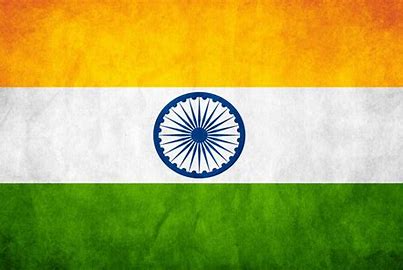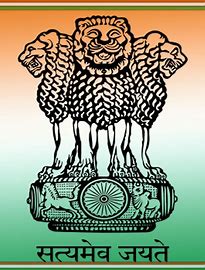India
What is India?
India, officially the Republic of India is a country in South Asia. It is the seventh-largest country by area, the second-most populous country, and the most populous democracy in the world. It is bounded by the Indian Ocean on the south, the Arabian Sea on the southwest, and the Bay of Bengal on the southeast, it shares land borders with Pakistan to the west; China, Nepal, and Bhutan to the north; and Bangladesh and Myanmar to the east. In the Indian Ocean, India is in the vicinity of Sri Lanka and the Maldives; its Andaman and Nicobar Islands share a maritime border with Thailand, Myanmar and Indonesia.
Where is India located?
India is located in Southern Asia bordering the Arabian Sea and the Bay of Bengal. Neighboring countries include Bangladesh, Bhutan, Burma, China, Nepal, and Pakistan.
What are the different names of India?
The five names of India are as follows:
1. Bharat
2. Aryavarta
3. Hindustan
4. Tenjiku
5. Jambudweep
Indian Flag

The national flag of India (Hindi: Tiraṅgā) is a horizontal rectangular tricolour of India saffron, white and India green; with the Ashoka Chakra, a 24-spoke wheel, in navy blue at its centre. It was adopted in its present form during a meeting of the Constituent Assembly held on 22 July 1947, and it became the official flag of the Dominion of India on 15 August 1947. The flag was subsequently retained as that of the Republic of India. In India, the term "tricolour" almost always refers to the Indian national flag. The flag is based on the Swaraj flag, a flag of the Indian National Congress designed by Pingali Venkayya.
By law, the flag is to be made of khadi, a special type of hand-spun cloth or silk, made popular by Mahatma Gandhi. The manufacturing process and specifications for the flag are laid out by the Bureau of Indian Standards. The right to manufacture the flag is held by the Khadi Development and Village Industries Commission, who allocates it to regional groups. As of 2009, the Karnataka Khadi Gramodyoga Samyukta Sangha has been the sole manufacturer of the flag.
Usage of the flag is governed by the Flag Code of India and other laws relating to the national emblems. The original code prohibited use of the flag by private citizens except on national days such as the Independence day and the Republic Day. In 2002, on hearing an appeal from a private citizen, Naveen Jindal, the Supreme Court of India directed the Government of India to amend the code to allow flag usage by private citizens. Subsequently, the Union Cabinet of India amended the code to allow limited usage. The code was amended once more in 2005 to allow some additional use including adaptations on certain forms of clothing. The flag code also governs the protocol of flying the flag and its use in conjunction with other national and non-national flags.
Indian Emblem

The National Emblem is the graphic representation of the Lion Capital that originally graced the top of the Ashok Stambh or Ashoka Pillar at Sarnath, along with the National Motto written below it. The Lion Capital crowning the Ashok Pillar is carved out of a single block of yellow sand stone and features four Asiatic Lions sitting back to back, but the two dimensional representation of National Emblem depicts only 3, the fourth lion is hidden from view. The four lions stand on a short cylindrical base that has four Ashok Chakras corresponding to each lion bust and reliefs of four more animals in between them – the lion, the bull, the elephant and the galloping horse. In the 2D form of the National Emblem, only one Ashok Chakra is visible in the front with the galloping horse on the left and the bull on the right of it.The Ashok Chakra is actually a form of the Buddhist Dharma Chakra. The actual Lion Capital sits on an inverted lotus abacus which has not been included in the National Emblem representation. Instead, below the representation of the Lion Capital, the words Satyameva Jayate is written in Devnagari Script, which is also the National Motto of India. The words are a quote from Mundaka Upanishad, the last and most philosophical of the four Vedas and is translated as ‘Truth alone triumphs’.
Done by Lakshana Venkatesan